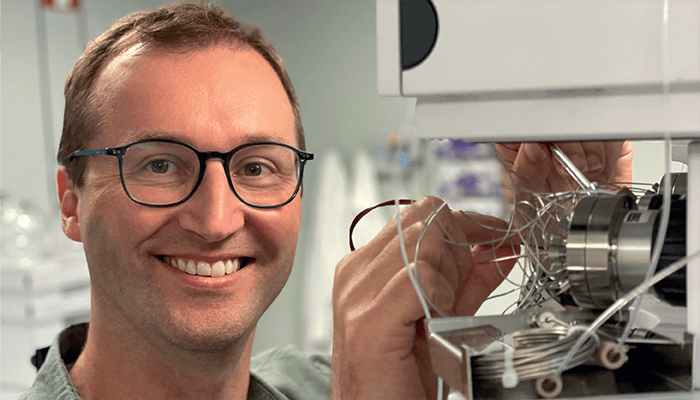
What’s the biggest breakthrough in analytical chemistry over the last 10 years – and why?
The evolution in protein analytics over the last decade has been vast. Clever and innovative analytical scientists have reshaped the field driven by the high demands of the biopharmaceutical industry.
We have seen huge advancements in column technology, the breakthrough of multidimensional liquid chromatography in all its glory (2D, 3D, and 4D), the maturation of ion mobility (IM) mass spectrometry (MS), the rise of native MS and the coupling of historical incompatible chromatographic modes, such as ion exchange chromatography and size exclusion chromatography, to the latter. It’s an impressive analytical arsenal that arms us to tackle the new and increasingly complex therapeutics and vaccines the biopharmaceutical industry is embracing.
Is there a particular instrument you would not have been able to live without over the past 10 years?
Without a doubt, high-resolution mass spectrometry (HRAM). It is unbelievable how many analytical questions we have addressed and keep addressing every day using this technology; for example, in-depth characterization of large and heterogeneous therapeutic proteins, such as antibody-drug-conjugates, the untargeted discovery of blood plasma metabolite and lipid biomarkers for the early detection of various diseases, the identification of small molecule impurities in food additives… The evolution these instruments have undergone in the last 10 years is enormous. Resolution is one thing, although often overemphasized, but I’m especially fond of the advancements in sensitivity, robustness, and data handling capabilities. Despite the latter, my advice to all mass spec geeks out there is: don’t forget to examine the data yourself. There is so much precious information to be found that search algorithms will not necessarily pick up.
Do you have any predictions for the field over the next decade?
Miniaturization and automation. The field will further be molded by increased product complexity and the societal push for more detailed and sensitive analytics.
Do you hold any strong opinions with which the rest of the field tends to disagree?
We work in a highly complex field that is driven by change. More often than not, a certain problem can be tackled using multiple approaches. In my experience, it is better to keep an open mind. That said, I recall a meeting in Cambridge in 2015 where I stated that HILIC would never be useful to resolve proteins. Today, more and more scientists are demonstrating superb separations of the latter molecules using … HILIC. Hindsight is 20/20, right?
Can you list three up-and-coming researchers in the field who you feel deserve recognition – and why?
Off the top of my head, Valentina D’Atri (Geneva University) and Alexandre Goyon (Genentech) for their excellent contributions to the field of biopharmaceutical analysis, and Bob Pirok (University of Amsterdam) for his innovations in multidimensional chromatography.
If you weren’t an analytical scientist, what would you be doing?
I would like to refer to the conclusion of a recent talk I gave reflecting on my journey in the analytical sciences:
“In hindsight, I could have chosen another job. I could have decided to pursue my childhood dream and become a pilot. I could have decided to become a professional soccer player like my cousin – if I had been talented enough. I could have decided to stick with my band members and tour the world and play the biggest rock festivals on this planet.
“No, instead I decided to become a scientist, I decided to step in the footsteps of my scientific father, I decided to marry a scientist, I decided to devote my life to science – life science. And till now, I’ve not regretted a single minute of it.”
Who are your heroes and mentors?
My scientific and entrepreneurial father has been my mentor and inspirator. As an eight-year-old boy, I recall him starting up a laboratory in our garage in the mid-1980s. My playground then was packed with chromatographs… And it still is today.
My father’s hobby resulted in an established company where cutting-edge analytics is at the core. Besides his business talent, his scientific contributions and recognitions are numerous. Highly respected by many, envied by some, he always kept his modesty, kindness, and willingness to help. Values I hold in high esteem. In the scene, I’m often referred to as “the son of…” I know my father is equally proud when he is recognized as “the father of …”
What advice do you have for those following in your footsteps?
Be confident and follow your dreams.
Be modest and learn from your peers.
Be critical and question the status quo.




